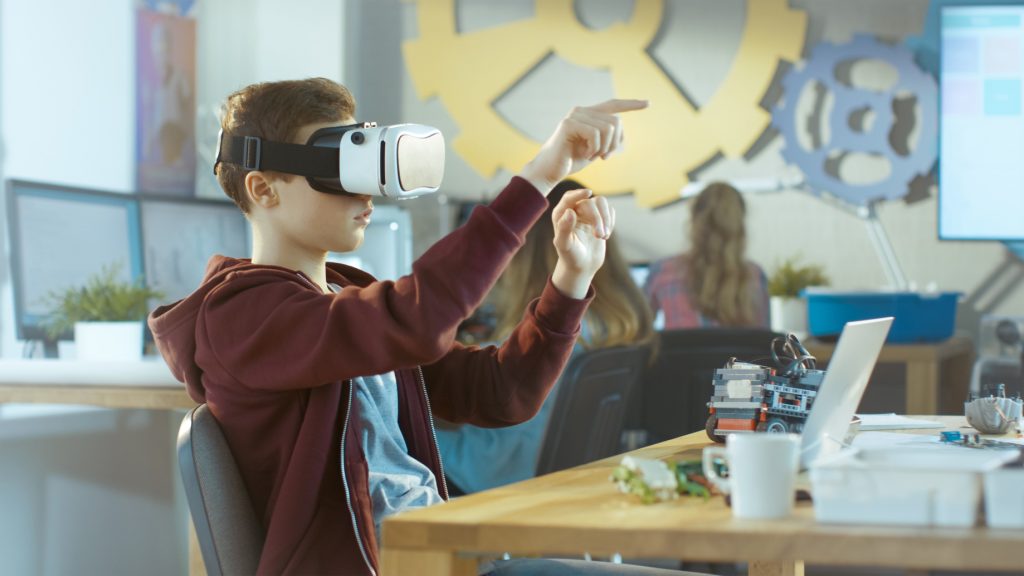Virtual Reality: Transforming the Classroom Experience

You and me, we’re living in a world where technology’s changing the game, and one area that’s getting a major makeover is the classroom. Gone are the days of dusty old textbooks and boring lectures. Today, we’re seeing a new wave of innovation sweep through education, and it’s all thanks to Virtual Reality (VR). In this article, we’re gonna explore the impact of VR on the learning experience and how it’s revolutionizing the way we teach and learn.
The Current State of Education
Let’s face it, traditional classroom teaching can be pretty dull. Students often struggle to focus, and teachers have to deal with a room full of restless kids. It’s no wonder that engagement levels are low and dropout rates are high. But what if we told you there’s a way to make learning fun, interactive, and immersive? That’s where VR comes in.
What is Virtual Reality?
For those who are new to the concept, VR is a computer-generated simulation of a three-dimensional environment. It can be experienced through a headset or other device, allowing users to interact with virtual objects and environments in a seemingly real or physical way. Think of it like stepping into a video game or movie, but instead of just watching, you’re part of the action.
Virtual Reality: Transforming the Classroom Experience in the Classroom
So, how exactly is VR being used in the classroom? Well, it’s being used in a bunch of different ways, from teaching science and history to training surgeons and pilots. But the common thread is that it’s making learning more engaging, interactive, and effective.
Science and Math
Imagine being able to explore the human body in 3D, watching a volcano erupt up close, or examining the intricate details of a molecule. That’s what VR can offer students in the science and math classroom. It’s no longer just about reading about concepts in a textbook; with VR, students can experience them firsthand.
Language and Culture
Language learning just got a whole lot more interesting. With VR, students can immerse themselves in a virtual environment that simulates real-life conversations and interactions. They can practice speaking with native speakers, explore cultural landmarks, and even take part in virtual field trips.
History and Social Studies
History’s no longer just about reading about dates and events; with VR, students can experience it firsthand. They can explore ancient civilizations, relive historical events, and even walk through virtual museums.
The Benefits of Virtual Reality in the Classroom
So, what are the benefits of using VR in the classroom? Here are just a few:
- Increased Engagement: VR’s interactive nature makes learning more engaging and fun.
- Improved Retention: Students are more likely to remember what they’ve learned when they’ve experienced it firsthand.
- Enhanced Empathy: VR can help students develop empathy and understanding by allowing them to walk in someone else’s shoes.
- Access to New Experiences: VR can provide students with experiences that might not be possible in real life, such as visiting a foreign country or exploring the bottom of the ocean.
The Challenges of Implementing Virtual Reality in the Classroom
While VR has the potential to revolutionize education, there are still some challenges to overcome:
- Cost: VR headsets and equipment can be expensive, making it difficult for schools to implement.
- Technical Issues: Technical problems can be frustrating and disrupt the learning experience.
- Content Creation: Creating high-quality VR content can be time-consuming and requires specialized skills.
Real-World Examples of Virtual Reality in the Classroom
Here are just a few examples of how VR is being used in the classroom:
- Google Expeditions: A VR platform that allows teachers to take students on virtual field trips to over 100 destinations.
- Unimersiv: A VR platform that offers educational experiences in science, history, and culture.
- zSpace: A VR platform that allows students to interact with virtual objects and environments in a 3D space.
The Future of Virtual Reality in Education
As VR technology continues to evolve, we can expect to see even more innovative applications in the classroom. From personalized learning to social learning platforms, the possibilities are endless.
Virtual Reality: Transforming the Classroom Experience Conclusion
So, there you have it – the power of Virtual Reality: Transforming the Classroom Experience. It’s clear that VR has the potential to revolutionize the way we teach and learn. It’s not just a novelty; it’s a game-changer. And as educators and policymakers, it’s our job to harness its potential and create a more engaging, interactive, and effective learning experience for all.
Virtual Reality: Transforming the Classroom Experience The Future is Now
It’s time to get on board with VR and see the incredible impact it can have on education. Whether you’re a teacher, student, or just someone interested in the future of learning, Virtual Reality: Transforming the Classroom Experience is the place to be. Let’s explore, discover, and push the boundaries of what’s possible.